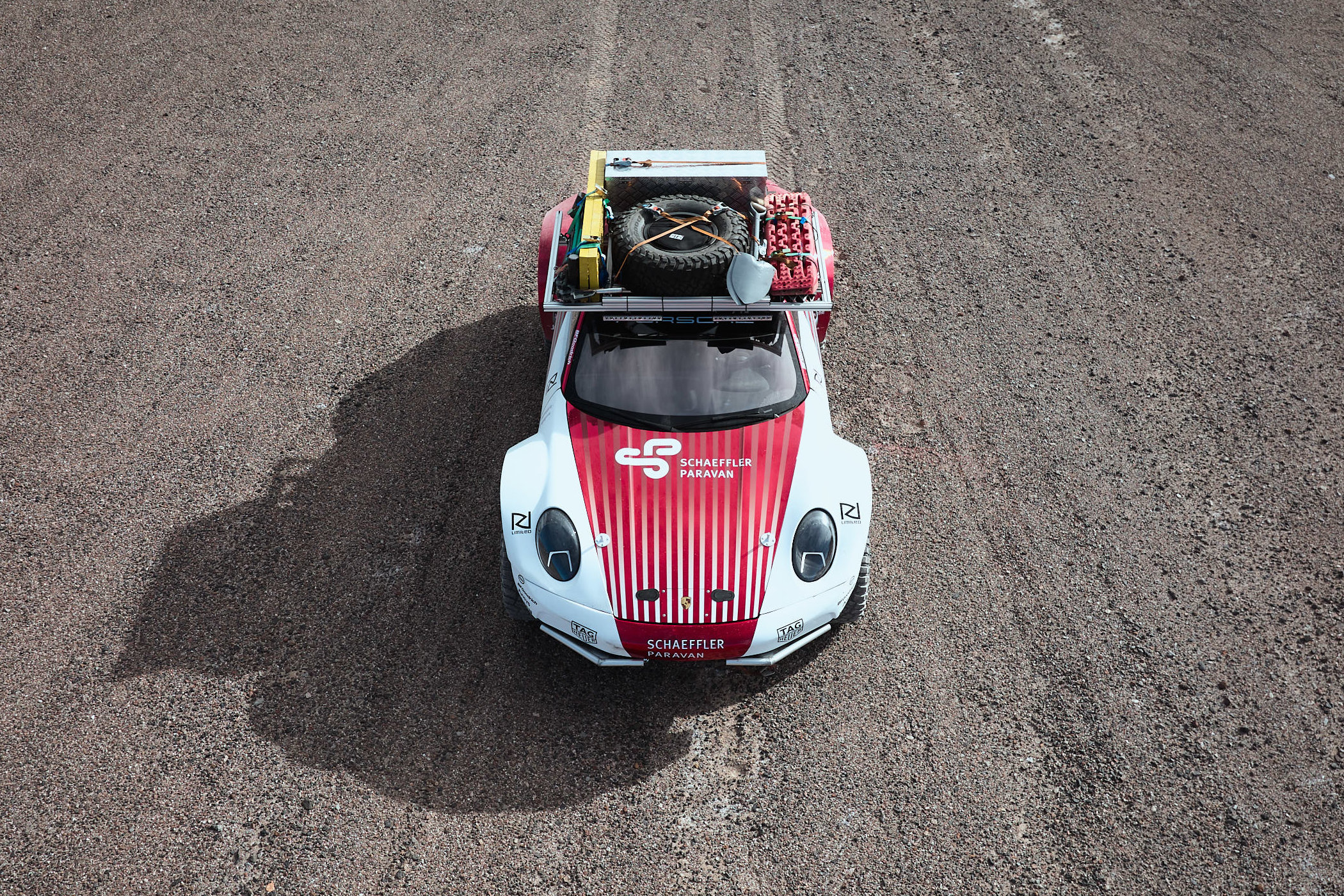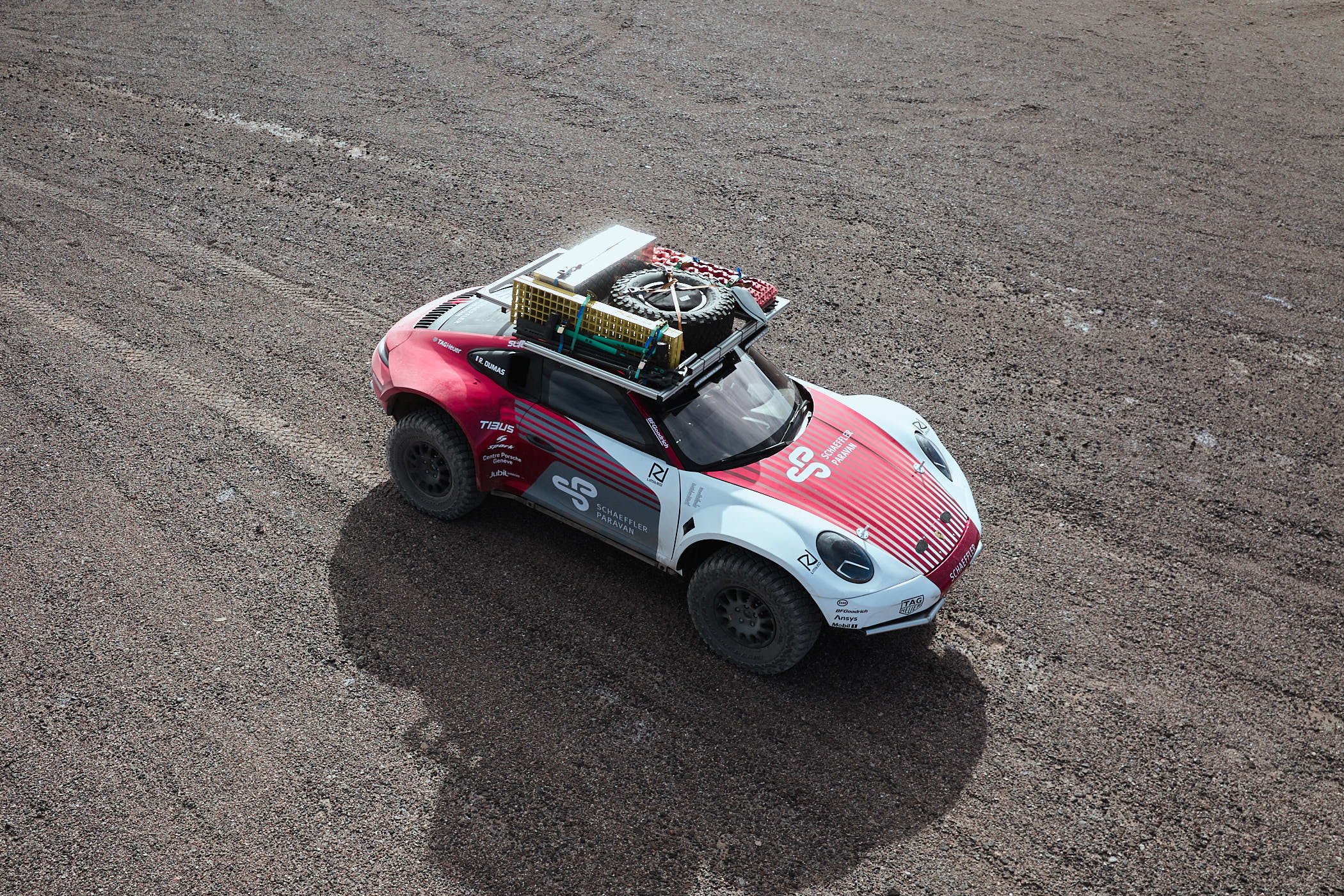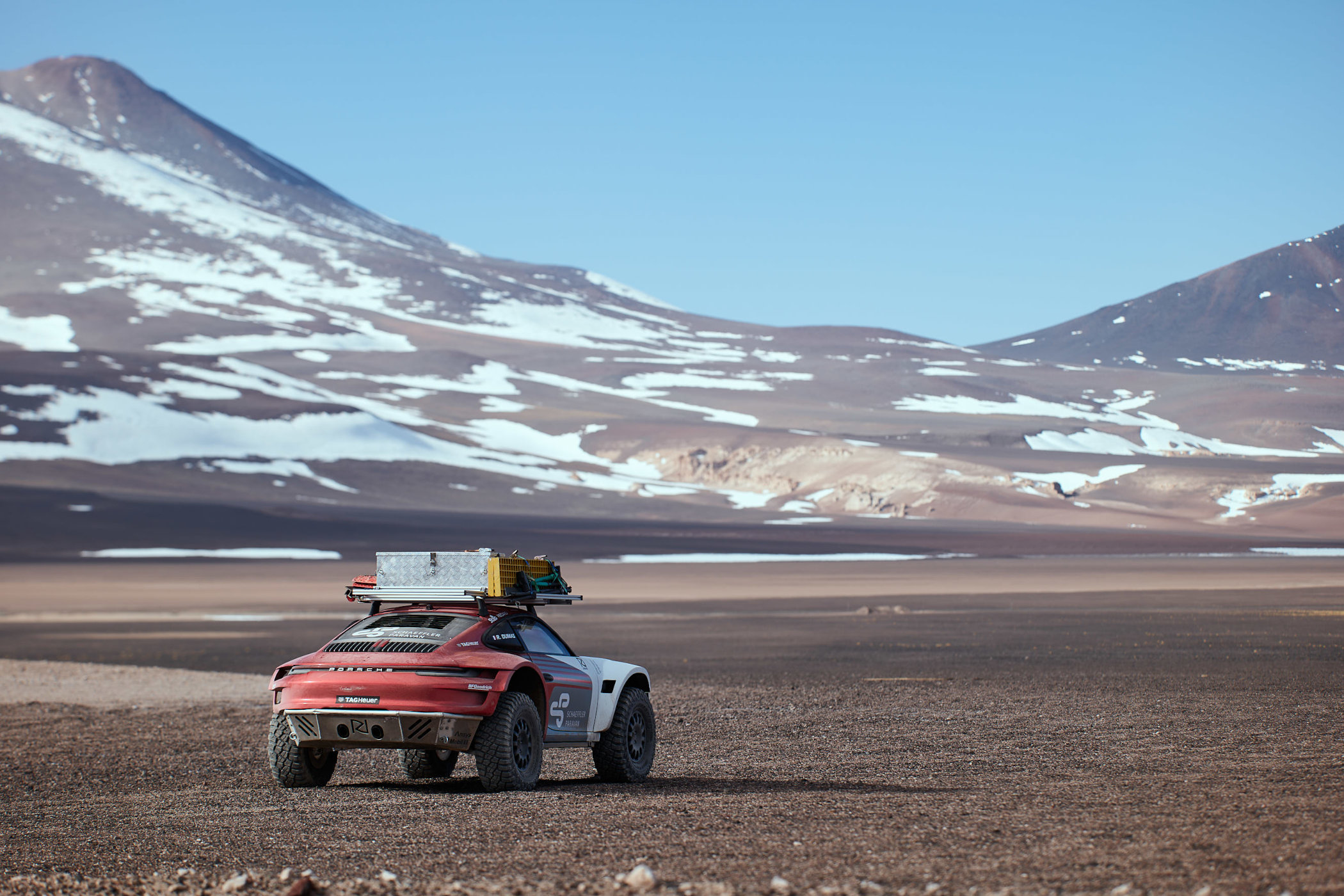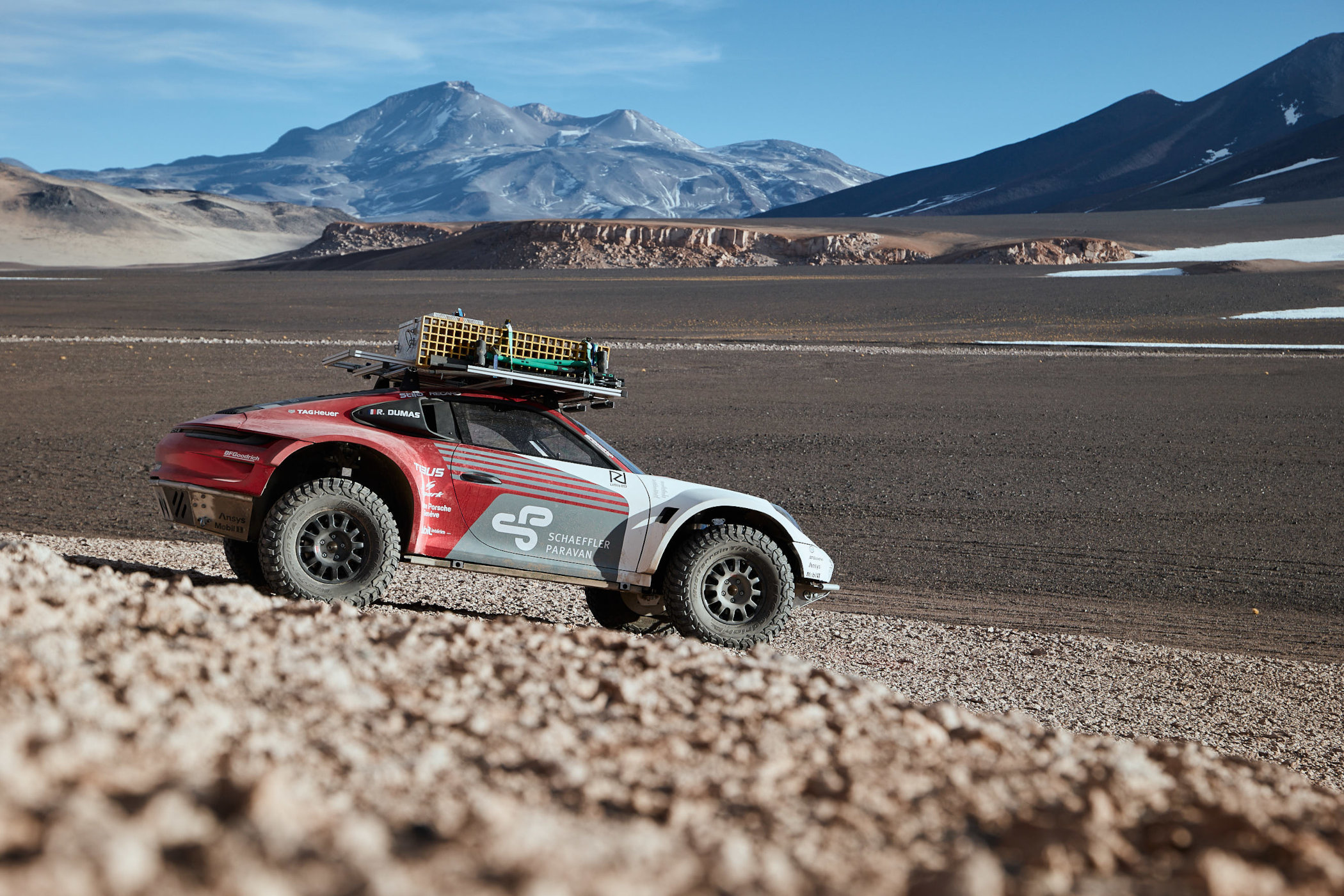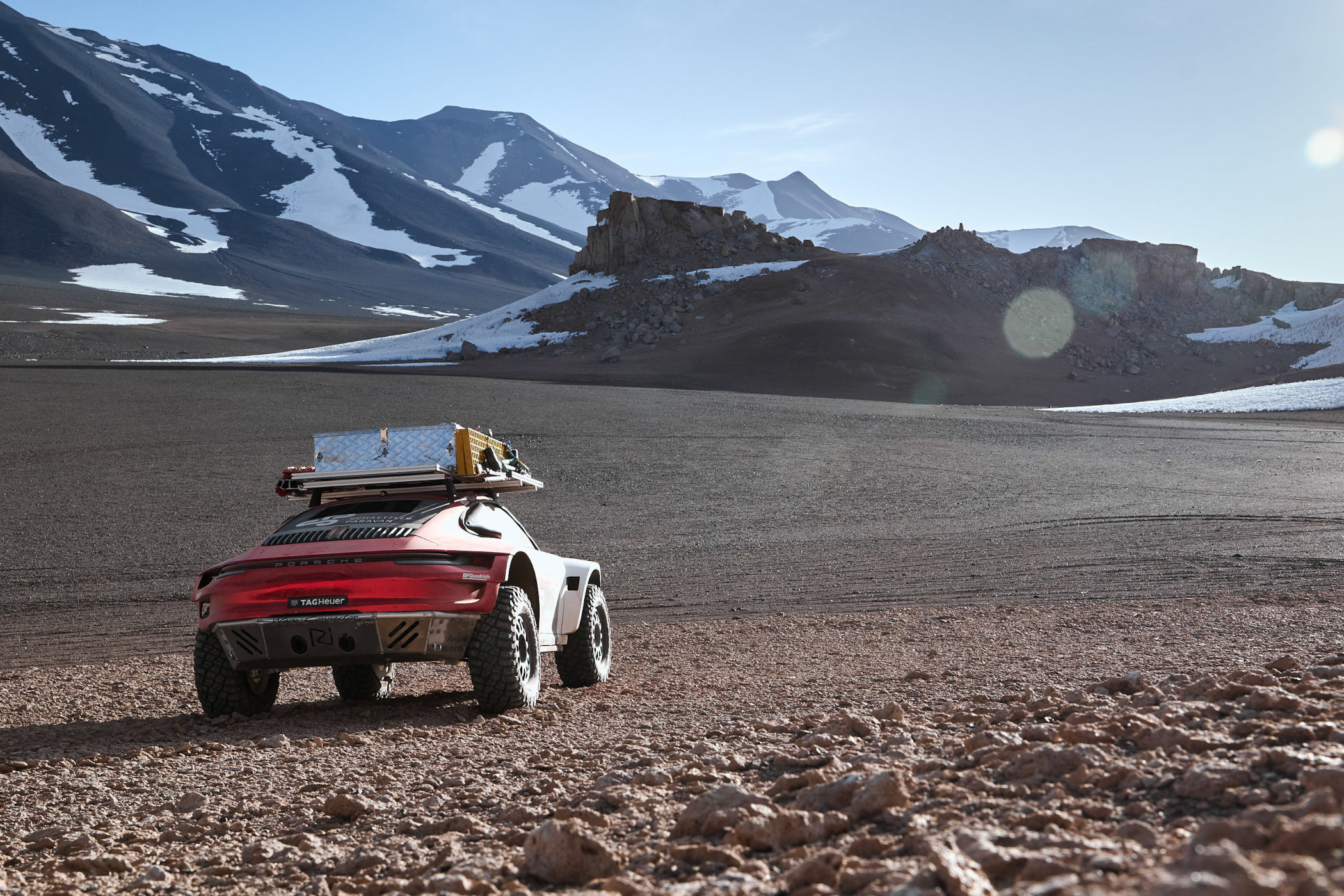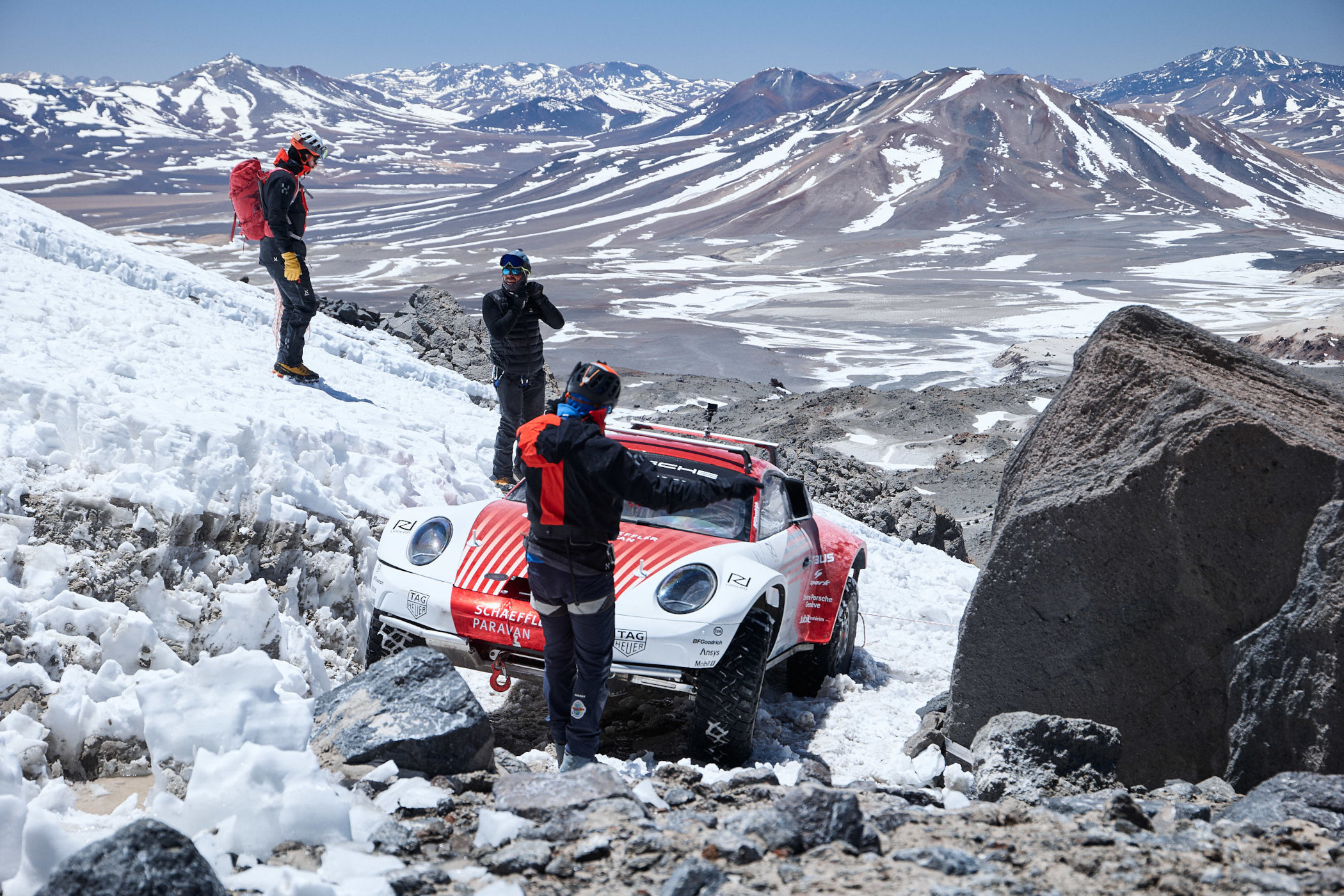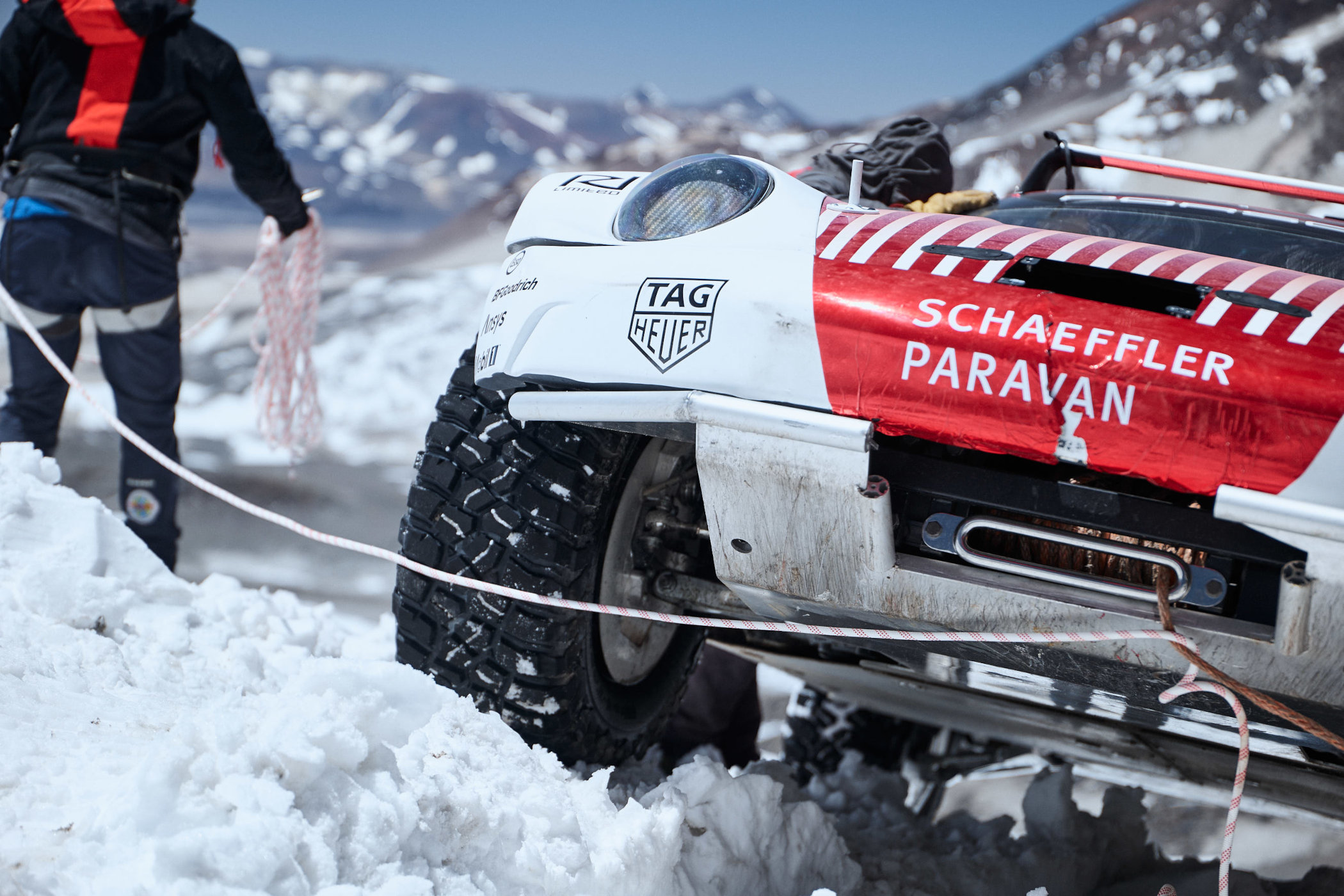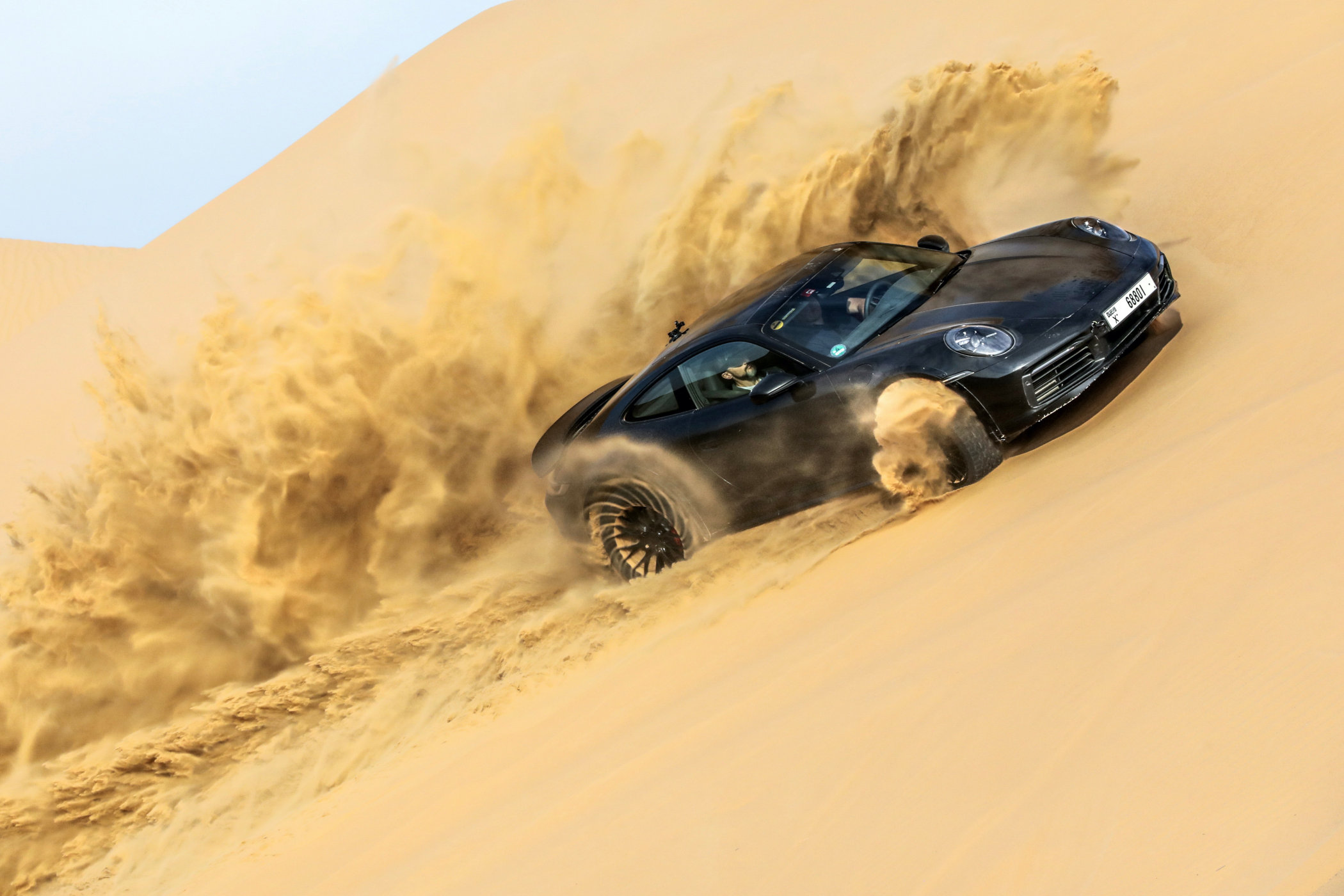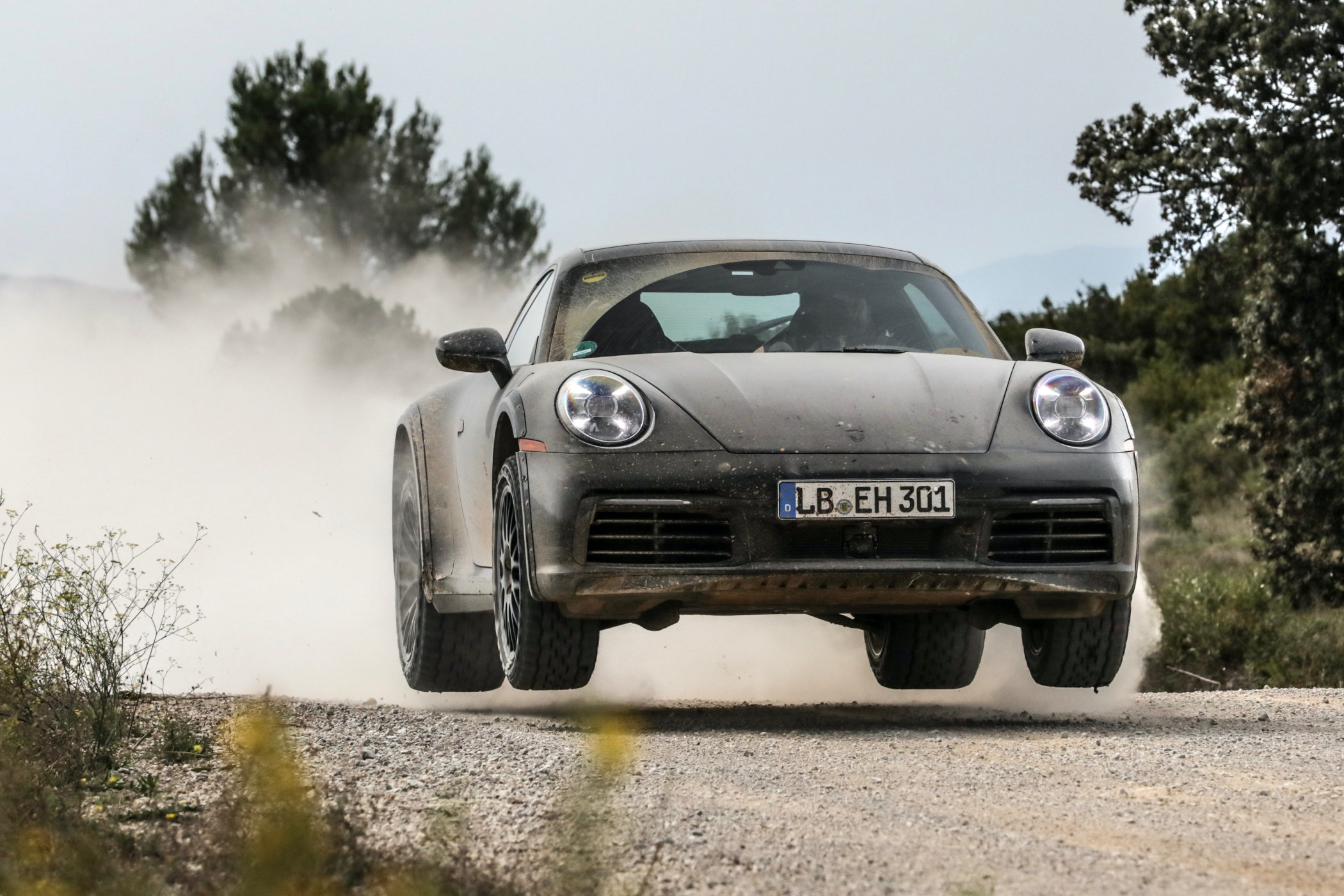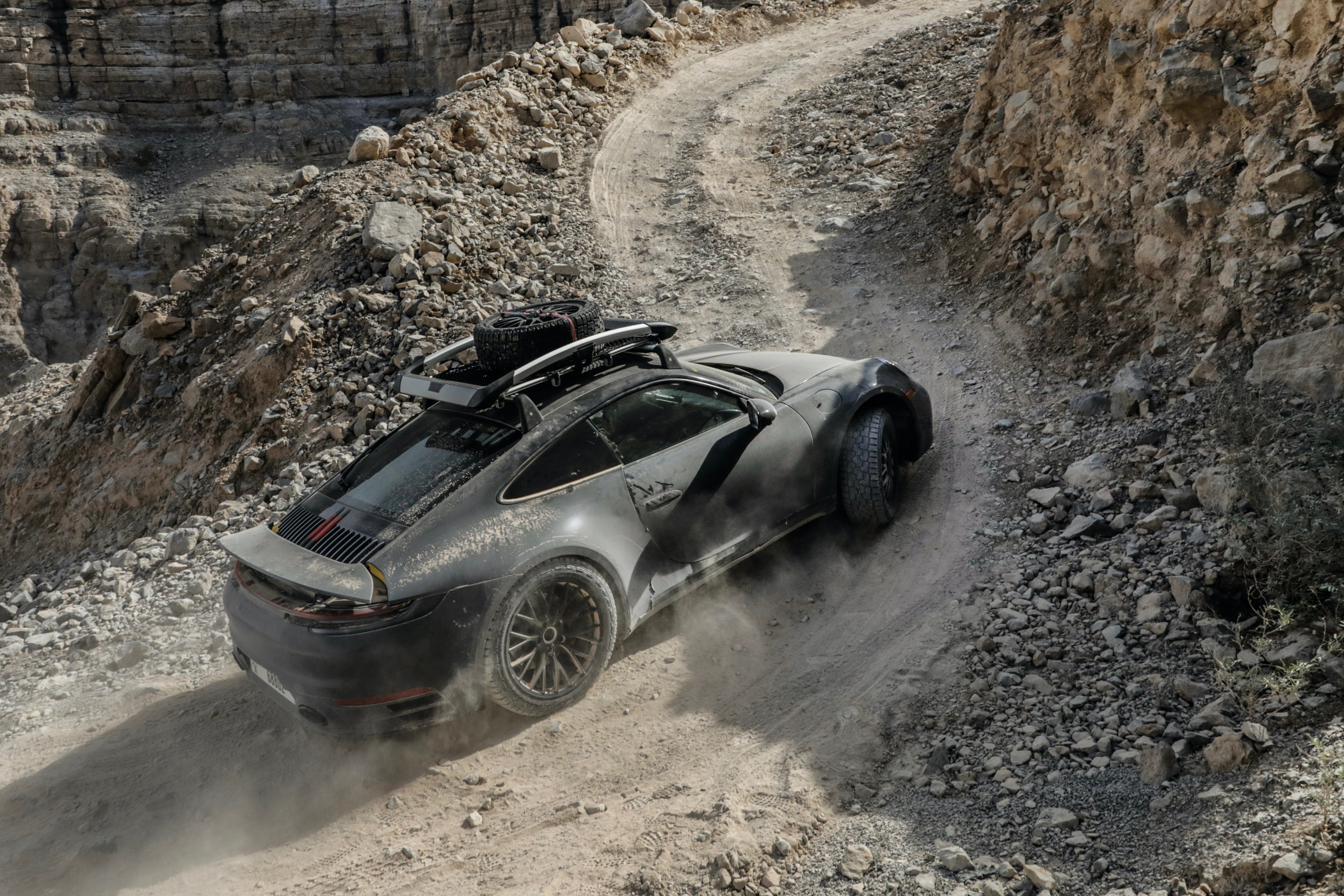Porsche Takes The 911 Up The Highest Volcano In The World
Two 911s have been specially prepared to tackle the daunting Ojos del Salado volcano.
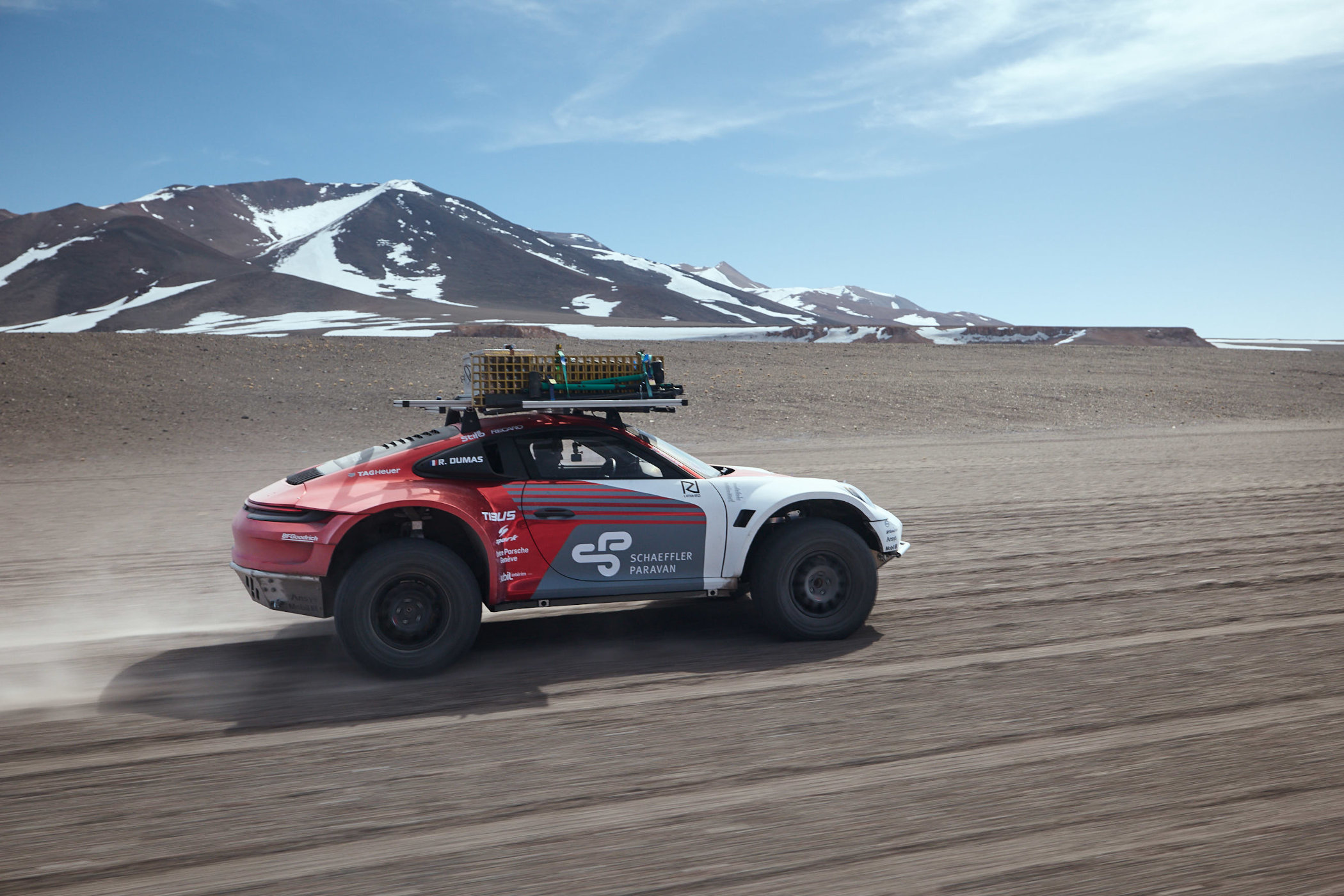
The Porsche 911 is an icon of motoring design and technology, honed to perfection over decades of innovation and development. Throughout its life, it has been at the forefront of what Porsche can do, and is considered the absolute benchmark of performance cars. But don’t think it’s just a boulevard queen, or a purebred track monster, as the 911 is much, much more than that! Porsche has made it a bit of a habit to push the proverbial envelope now and then, and see how far it can take things with its famous sports car. In racing, they did it with the 911-derived 934/935 race cars, which lead to an overall victory at Le Mans in 1979. Porsche also took the 911 off-road and competed in countless rally events and even won the Paris-Dakar challenge in 1984! It goes to show the 911 platform is as versatile as Porsche wants it to be. And the next step? Taking it up to the top of the highest volcano in the world, of course!
The lineage of the Porsche 911 goes back to the original Volkswagen concept and the famous Beetle. Even today, people jokingly refer to the 911 as a squashed VW Beetle. The lineage connecting the two cars is clearly there, as both are products penned by members of the Porsche family. The Volkswagen was designed by Ferdinand “Ferry” Porsche and the 911 by his son Ferdinand “Butzi” Porsche. The concept of both the Volkswagen and early Porsches we’re quite similar, with the latter even using components of the former (suspension, engine casing). From there, the similarities more or less end, however, as the cars badged with Porsche grew more and more into luxury sports cars than a ‘car for the people’ like the Volkswagen originally was meant to be.
Since the early days of Porsche, racing has been at the heart of the company. This was at a time results on the race track immediately impacted sales (win on Sunday, sell on Monday). It’s a well-known fact Porsche holds the record for most overall victories in the famous Le Mans 24 Hours race, with 19 wins and counting. If you add up all the class wins, that number becomes even more significant! It might come as a surprise to some, but even off-road Porsche can bring some impressive statistics to the table. How about being champions in the European Rally Championship in 1953, 1961, 1966 through 1968, and 1980? Or how about winning multiple stages in the World Rally Championship? And best of all, winning the gruelling Paris-Dakar Rally not once, but twice? All with cars initially not designed to muck about in sand and dirt.
This all leads to today’s central topic, the set of Porsche 911 has prepared to tackle the highest volcano on Earth. To put things in perspective, the Ojos del Salado volcano in Chile peaks at 6,893 meters high. That’s more than 2km higher than the Mont Blanc! That’s more than 1km higher than the highest paved road in the world (the road to the top of the Uturuncu volcano in Bolivia). Pretty crazy right? And it’s far from simple to make a car perform at such altitudes. The biggest challenge is perhaps not the rough, unforgiving terrain, but the simple fact at 6km (20.000 feet) of altitude you only have 9.7% effective oxygen left in the air, less than half the percentage at sea level. And this oxygen is not only needed by humans to breathe but also by engines!
But why do this in the first place? The simple answer is to see if it’s possible with a Porsche 911 or not. Two cars have been specially prepared for the expedition, one piloted by Porsche factory driver and three-time Le Mans winner Romain Dumas. He also took the Volkswagen ID.R to victory in the 2018 Pike’s Peak International Hill Climb in a record-setting time, so he knows a thing or two about racing at altitudes. During the expedition, the team hit a peak of 6,007 meters before snow walls and ice prevented them to go any higher. Nevertheless, this is quite a monumental achievement as few people have gone higher in a car, let alone a Porsche 911!
Obviously, the cars are far from standard but are based on a 992-gen Porsche 911 Carrera 4S’ you and I could potentially buy at the dealer. The factory standard flat-six engine with 443 horsepower was left pretty much untouched, which is quite surprising given the risk of running in thin air and temperatures 30 degrees below zero. The biggest visual changes are the elevated ride height, portal axles and chunky 310mm wide off-road tires ‘nestled’ under wheel arches that have significantly grown in size. On the outside, you also have a roof rack to carry spares and equipment, a front-to-rear underbody skid plate, a new set of crash-proof front and rear bumpers and a winch. The interior of the car is fitted with a roll cage, carbon fibre bucket seats and racing harnesses, and added controls to keep the car in check when climbing the mountain. Other changes include a gearbox with lower ratios, a device called Porsche Warp-Connector which is a mechanical link between all four wheels to control the load per wheel, and manually switchable differential locks.
And even though the car never actually made it to the summer of the Ojos des Salado, through no fault of its own by the way, there’s more to this 911 than just a ‘simple’ expedition climb. The car in question is in part a prototype for the upcoming Porsche 911 Dakar, set to be unveiled at the LA Auto Show which is set to take place between November 18th and November 27th. The Porsche 911 Dakar is the first-ever off-road spec 911 you could potentially drive straight from the showroom floor and out in the open. The car is a nod to the 911 that won the Paris-Dakar rally in 1984 by name (instead of Safari, the initial project name), but underneath it is a properly different beast compared to your standard 911.
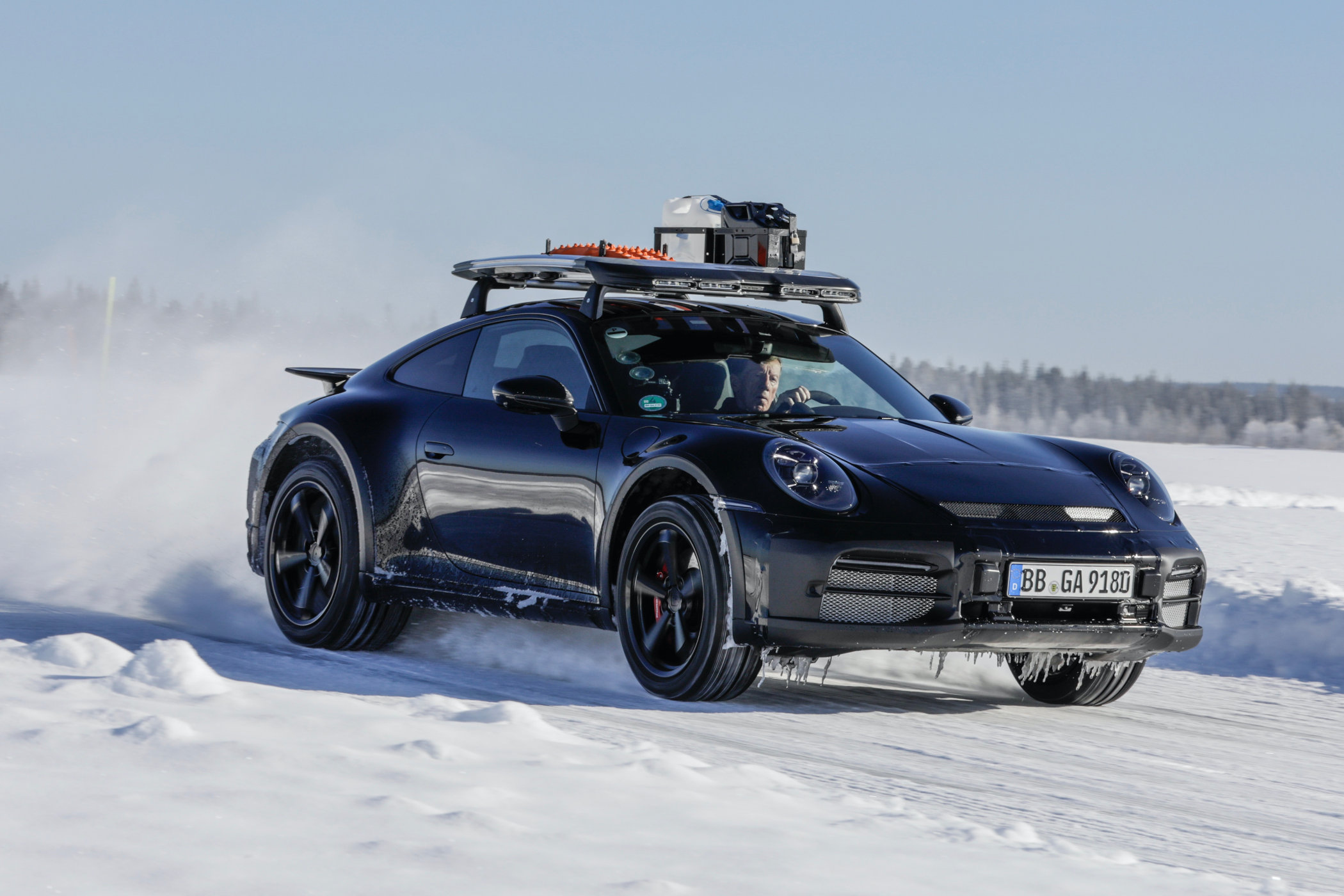
The ride height and ground clearance have been increased, the chassis has been stiffened, and all-terrain tires have been fitted. During development, it was tested at the Château de Lastours testing grounds in France, where Dakar teams also go to test their equipment on all types of terrain. The 911 Dakar was also subjected to extreme colds and tested on ice and snow in Arjeplog, Sweden and in the blistering heat of the dunes of Dubai and Morocco. At this point, there’s little more news available in terms of specs and price, but it does look like the 911 Dakar will offer plenty of fun and excitement on the road, and even more so off it! It proves yet again how capable the 911-platform really is!
For more information, please visit Porsche.com or PorscheNewsroom.com

